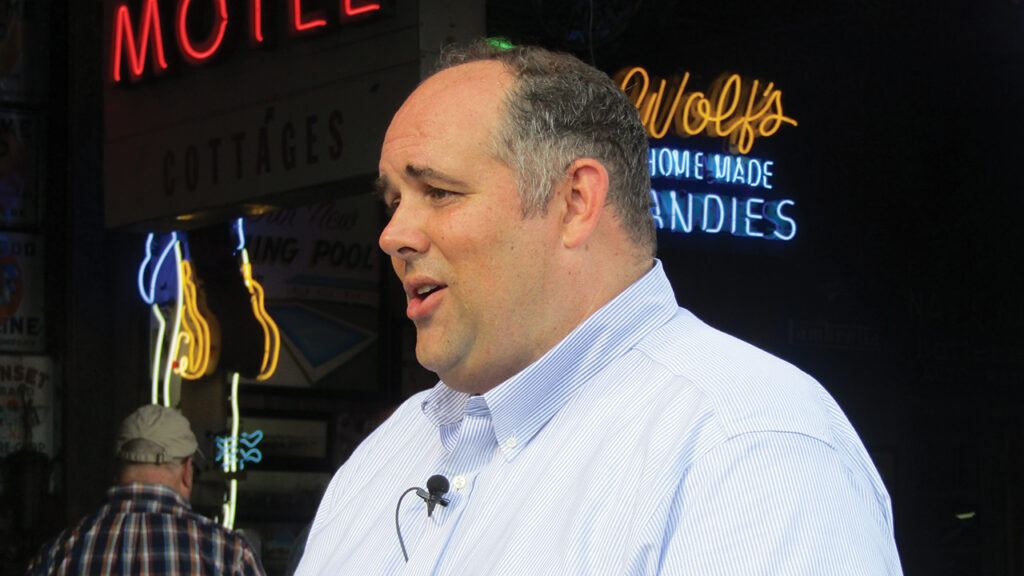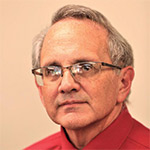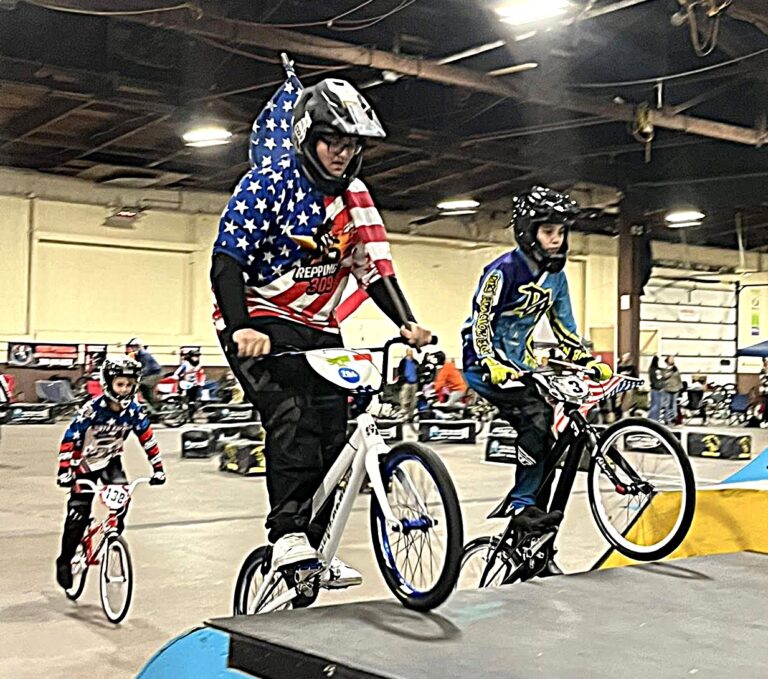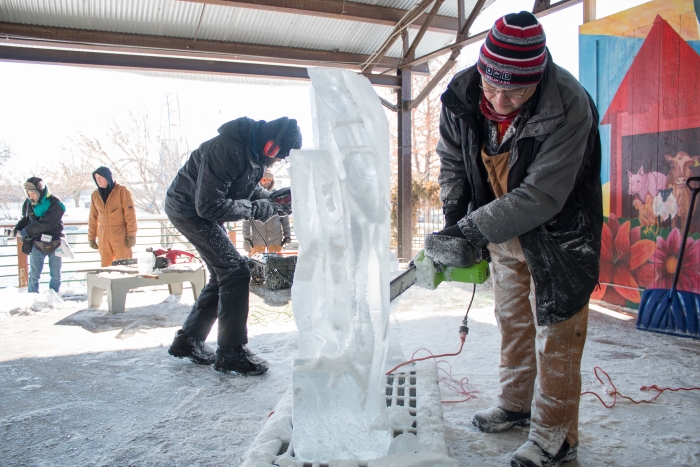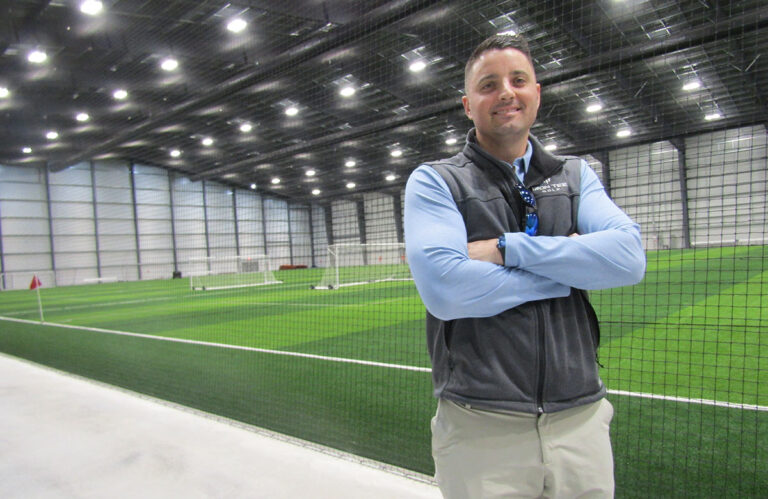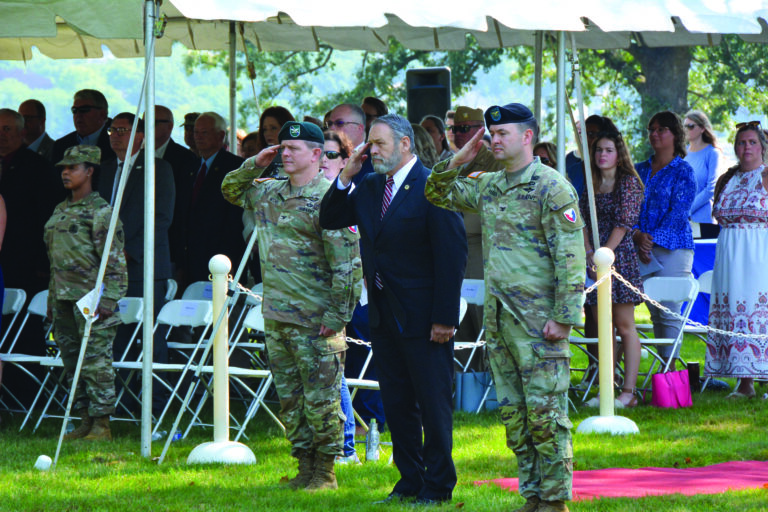The Hilltop Campus Village (HCV) faces big plans and challenges.
Brian Kramer, HCV executive director, outlined much of that big work during the central Davenport group’s recent annual meeting. It includes major street improvements, putting together a “Master Plan” for the area, creating opportunities for businesses and much more.
Mr. Kramer recently outlined some of his hopes, goals and plans for the Hilltop for the QCBJ. They include:
What projects do you hope will be completed in the next five years?
A major project that was proposed before I took this position was the Fountain-to-Fountain Project. To boil it down, it’s the improvement and upgrading of Main Street into convenient thoroughfare from LeClaire Park to Vander Veer Park for pedestrians and cyclists.
It would be a goal for the Hilltop to see the first phase of this completed. The first phase has been identified as repaving and upgrading Main Street from 5th to 12th streets. This would include some beautification upgrades and designated parking areas beyond just repaving the street. The last estimate from the city is that it would cost around $2 million.
However, this is an important project because it does two things: It improves a thoroughfare that is important to so many stakeholders — Palmer College, St. Ambrose University, and Davenport Central High School; and by making this investment in a multi-modal thoroughfare the surrounding neighborhood will improve.
Additionally, I will be engaging our funders about the creation of a Master Plan for the neighborhood to be completed in the next year. The goal of the document would be to really articulate the vision and goals the neighborhood should share over the five to 10 years. The HCV has not engaged in this kind of planning since its inception in 2009. By creating this document, I hope to really articulate the kinds of projects we need to really upgrade the neighborhood for investment and development.
What are some of the challenges facing the Hilltop Campus right now?
I think the biggest challenge to this neighborhood is overcoming the many perceptions it has. One of those notions is that it is not a safe neighborhood. First, I think many would agree that the neighborhood is way safer than it was 10 years ago and it’s considerably more cleaned up than it was. While controversial, property owners and stakeholders have stepped in to demolish blighted homes. It has cleaned up the neighborhood considerably, but there is still more work to be done.
Over the last year I have listened to local business owners and residents and there is still a real concern about traffic along Brady and Harrison and calming the traffic. I believe that we need to do a better job in engaging the city council, city staff, and state DOT in coming up with viable safety strategies and improvements that will help slow the traffic and make the neighborhood more appealing to pedestrians. An immediate upgrade would be putting up a pedestrian light at Harrison and 16th Street so that local residents can make a safe crossing.
Another challenge that I feel we have in the neighborhood is creating a sense of place.
A common statement that I hear is “I didn’t realize this (whatever store the customer is in) was in the neighborhood.” We have a lot of great businesses — Red Band, Donuts & More, Main Street Coffee, The Brewed Book, Miss Phay Cafe — but very little keeping people here for more than an hour. The Hilltop, as an organization, needs to create opportunities that will drive foot traffic in the neighborhood. We started hosting Hilltop Cars & Coffee once a month and we have other events that we would like to do in the future.
At HCV’s annual meeting, you talked about the importance of a “Master Plan.” What will be some of the main goals?
In 2009, the Hilltop Campus Village Board and then Executive Director Scott Tunnicliff identified projects and a vision for where the Hilltop neighborhood should go.
Over the years, some of those projects were completed, some are still in process, and some never were developed. It’s 15 years on, and it is time to reinvestigate where it is that the HCV would like to go.
Through a Master Plan, I hope to do several things. One would be to identify the kinds of amenities that the residents of the neighborhood would like to see and to also identify a theme to those businesses. Is the Hilltop the cool coffee shop/bookstore neighborhood? Is it that neighborhood with all the cool furniture and clothing resale shops? It has been a long time since the organization has asked these questions.
Additionally, I hope to create a document that will identify the kinds of neighborhood improvements that will spur investment. The Fountain-to-Fountain project is a perfect example of something that will have a profound improvement on the neighborhood. Accordingly, identifying those projects that will be capital type improvements, but also create a safe more pedestrian friendly neighborhood would be a major goal.
Both St. Ambrose University and Palmer College have stated that they want the neighborhood to be safer and, in turn, more inviting to their students. Creating this document will go a long way in helping articulate, as a community, what that looks like.
Finally, creating this plan for the neighborhood will reinvigorate neighborhood and stakeholder involvement. The pandemic really took a toll on a lot of community-minded organizations. In a post-pandemic world, the HCV needs to re-engage our neighborhood residents beyond our normal stakeholders.
The Hilltop is about 65% residential; and 70% of those residential units are rental units. It makes organizing a community difficult with such a transient population. Asking for community participation will not only inform the kinds of projects we need to implement, but also identify those community members that want to be invested in the future of this corner of Davenport.
Final thought on this. This document needs to be a comprehensive vision for the neighborhood. Meaning it needs to incorporate what our stakeholders (Palmer College, St. Ambrose University) already have planned and the other projects that are in the works. Examples would be the 40 units of housing that Vera French will be putting up at the Carol Center and the redevelopment project that The Center has planned for their block. Penny Kellenberger, executive director of The Center, recently reminded me that they have started work on their project of investing $250,000 to “transform a city block into a healthy community.” So, this document needs to be comprehensive and mindful of the many things that are already happening in the HCV.
What are some of the best features about the Hilltop?
The potential. I was walking some stakeholders around the neighborhood the other day and we were talking about the current vacant spaces, but also some of the cool stores that the Hilltop has. We had lunch at Rock’s Anchor Grill, grabbed a coffee next door at The Brewed Book; and then stopped into The Painted Ghost (tattoo parlor), Life Breads Bakery, and 563 Vintage.
At first glance of the Hilltop, some might say “Eh, there’s nothing there,” or you might just keep driving. However, the number of times that I have heard people say “This is awesome, I didn’t realize this was here” tells me that there’s so much more room for the neighborhood to grow.
During this walk around the neighborhood, my guests left with “Wow, I didn’t know this was here and this is awesome” and I am certain one is stopping back at the Painted Ghost.
A business that recently closed was Hilltop Closet, a vintage clothing retail shop. The part that made it stand out in my mind was the fact that they would do music and comedy shows in the backroom of their shop at night. A real speakeasy in the neighborhood, providing a cool amenity that you cannot find anywhere else in Davenport. A “Wow, didn’t know this existed, and I want to come back” experience.
It is from those kinds of statements about the features and amenities that the HCV has that I hope will attract entrepreneurs, investors, and developers to the neighborhood.
What impressions do you hope out-of-town guests have about Hilltop?
We get a lot of out-of-town guests visiting the neighborhood because of St. Ambrose University and Palmer College. Over the next five to 10 years, I want those visitors to return to the neighborhood and find something new, or to see changes happening to the neighborhood that would make them want to stay and explore the neighborhood. I would love for one of those thoughts and feelings to stem from an amenity that becomes a tradition.
When I was in college at UNI in Cedar Falls, a tradition in our family was going to Montage or The Brown Bottle. I hope the opening of businesses like the Hilltop Inn (the former SAU Alumni House) as an event/vacation rental space will start to have that effect on current students, alumni and visitors. I think this neighborhood is primed for taking an old historical home and turning it into a bistro like Cafe d’Marie in Davenport or Crane & Pelican in LeClaire.
What needs to be done to increase funding/grants for HCV’s work?
The first step is a Master Plan. I have heard from many stakeholders that they need to see a vision for the neighborhood before they invest more. Without that document that really articulates and visually illustrates a vision of where we would like to go with the neighborhood, it is sometimes hard to explain why more funding is needed outside of stating we need to upgrade the signage.
In researching what this will take, $35,000 is our goal in funding this project. This will be a large undertaking, but this will give the Hilltop a solid foundation to work from over the next five, 10 and even 20 years.
Recently, I attended the Downtown Davenport Partnership’s Annual Meeting, and throughout Kyle Carter’s tremendous presentation about all the wonderful things that had happened, he continued to hammer home the idea “This is why we have a plan, and this is why we stick to it.”
Fifteen years ago, Scott Tunnicliff gathered stakeholders and residents together. They developed ideas for projects, and they created an action plan. Scott, to his credit, stuck to many of those ideas and provided excellent leadership as the executive director for the HCV. However, that was 15 years ago. To reinvigorate stakeholders, funders, and the residents, it is high time to have a new conversation to create that transformative vision for the area.
What workshops/educational events would help HCV businesses?
Over the last year, we have started a partnership with the Small Business Development Center to host monthly workshops with small business owners and entrepreneurs. We have covered business plans and planning, marketing, use of new technology, and understanding that you must identify your customer in all of this.
This summer I really want to go door-to-door and speak to the residents about some of the educational events, programming, and services that they would like to see and filter them toward those agencies already providing them.
An example of this is the Davenport Dream Program, a program that helps homeowners — in certain parts of the city — improve their homes with help from the City of Davenport. The HCV does not need to recreate that program, but we do need to inform residents that there are programs that will help them do improvements to their homes.
Also, creating programming that draws people to the neighborhood. We have recently started a monthly “Cars & Coffee” event using the many parking lots that we have. We are currently running Hilltop Cars & Coffee events every month at JB Young in Davenport and anyone with a car to show off is welcome.
Additionally, we have floated the idea of a vendor/rummage sale in line with what the Rock Island Parks Department has done with Longview Park a couple of times each summer. If successful, it could grow into another night market like Mercado.
How can you attract more volunteers to help with HCV projects?
That first step in attracting more volunteers is pounding the pavement and re-engaging the residents in the neighborhood by either going door-to-door and inviting them to get involved, or creating events where we capture their interest. During the pandemic, a lot of our volunteer base went inactive. For any organization, it has been difficult getting past the stigma of that event. It is now time to get back out there and find those that want to make an impact in their surrounding neighborhood.
Another aspect of this is capitalizing on the organizations and stakeholders already in the neighborhood. While I have done the outreach, it is now time to start asking for help with projects. Last fall, we had 15 SAU freshmen help the HCV clean up the entrance to an alleyway on 16th Street.
I would like to continue partnerships like that because when we do projects in the neighborhood, it gives those students a chance to really experience the neighborhood and find those businesses they may not know about.

